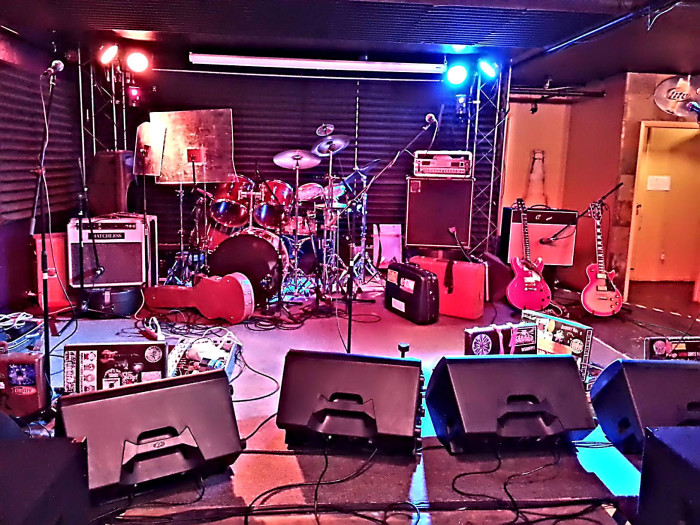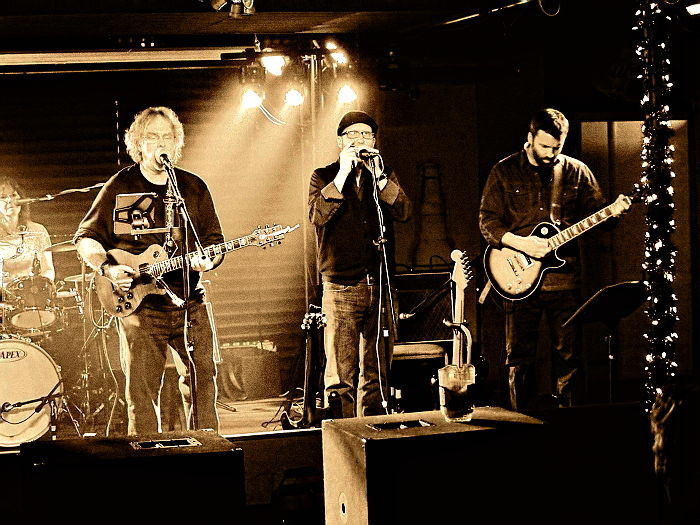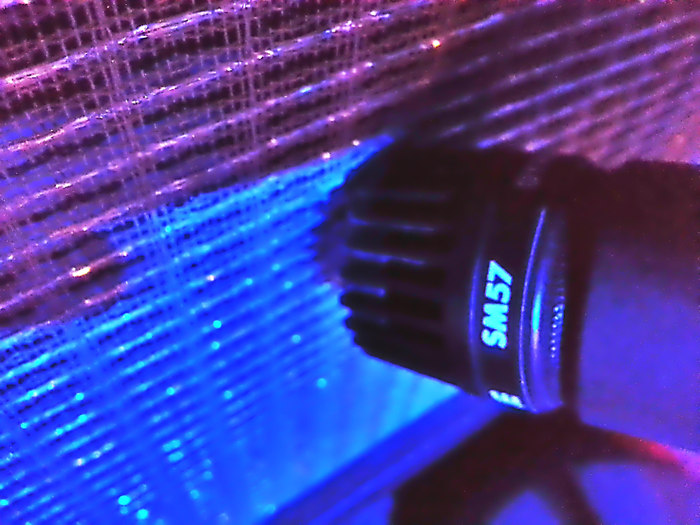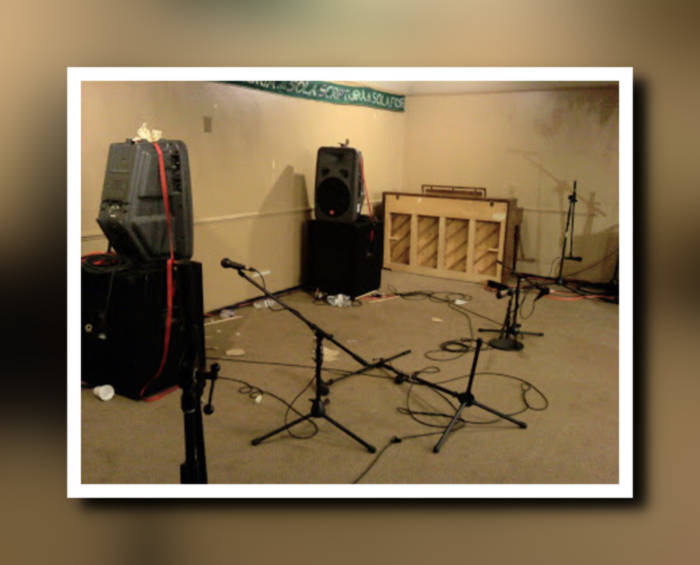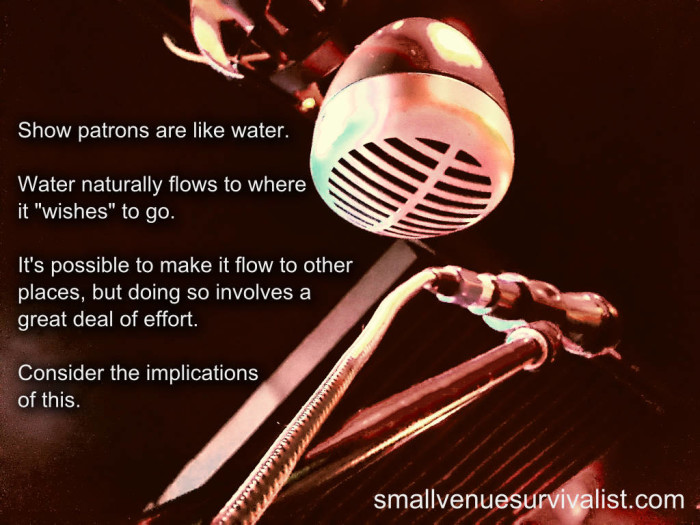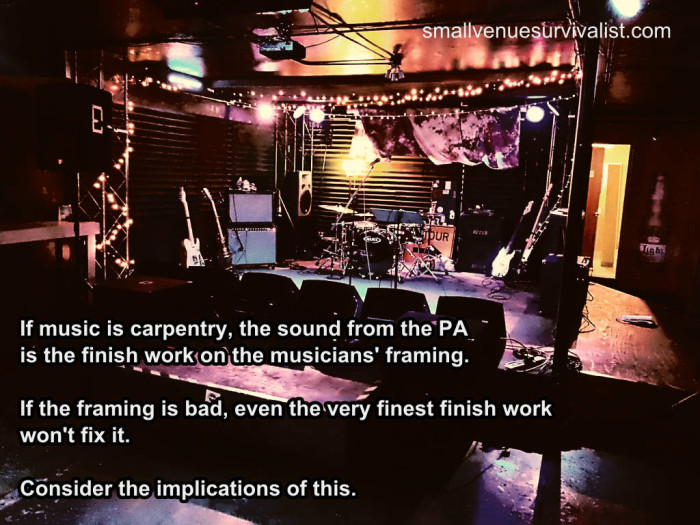Harman Intending To Buy All Of Pro-Audio Industry
No longer satisfied with owning half of everything in pro-audio, Harman announced today that they will be acquiring literally everything else.
“Our goal is that, by Q4 2015, we will have acquired all the things,” said a company spokesperson on Wednesday. “It’s a great strategy for us. No matter what people buy for small clubs, large installs, or touring systems, we’ll be there to provide value and a strong commitment to service.”
Asked if this would overly homogenize the world of sound, the spokesperson replied, “Of course not. We intend to maintain very strong brand identities across our entire portfolio. As an example, we feel that there’s a real need for people to be able to complain about ‘not liking the JBL sound.’ I mean, without idiotic, ‘Ford vs. Chevy’ arguments on sound forums, where would society be? We’re excited to do our part to keep the music community a vibrant place of convictions that rival those of politics, religion, and sports.”
When pushed for a comment on whether Music Group would stand in the way of Harman’s buy-everything strategy, the spokesperson was emphatic. “We are the swarm. We consume all.”
New Mic Preamp From Dog-N-Pony Designs
Here at the office, we were very excited to get our hands on the new, improved, single-channel mic pre from Dog-N-Pony designs. We were practically giddy with excitement as we unboxed the sleek, aluminum and carbon-fiber unit and got everything plugged in.
The first thing we noticed was how warm it was. Thermally, I mean. Dog-N-Pony have incorporated no less than seven 12AX7 tubes into the design, and they generate a fair amount of heat. If you get your gas shut off after paying for this puppy, you’ll be okay – just keep it turned on all the time, and you’ll be toasty. We don’t actually know if those 12AX7s are incorporated into the signal path in a sane way, but they’ve got to make this thing awesome. I mean, c’mon you guys. Tubes are what Pink Floyd and Jimi used. Could you possibly go wrong with them?
All that heat means that you can’t stuff this thing into a rack. That’s okay, though, because after spending $3000 on one channel of preamplification, do you really want that unit hidden away? No! Especially not when it looks as good as this baby. It has a MASSSIVE, analog VU meter on the front, backlit in a fetching amber color that screams, “I charge $500 per billable hour.”
Okay, it looks great, and it has tubes. Those are critically important elements – but how does it sound?
Well, it was designed by a bunch of British people, so it has to be pretty good. The Brits have Rupert Neve, and they were on the winning side of World War II, so their stuff has to sound decent, right? (It’s also rumored that Mr. Neve once sneezed in the general direction of where Dog-N-Pony’s offices would be built, so maybe there’s some special mojo happening. You never know.)
When we listened to the pre, it was absolutely warm and silky, with a satin sheen on the top end and more of a matte finish below 100 Hz. Around 200 Hz, the unit sounded like a desert sunrise, and the critical vocal range was suffused with notes of caramel, nutmeg, and the color “9.” (It’s sort of like orange, except more purple.) We were all sure it sounded much better than the sub-$1000 pre we tested last week. Which we tested in a different room. With a different microphone. And a guy who was just talking instead of the experienced singer we had this time around. I mean, who needs repeatable, comparable tests of objectively measurable data when the review unit is British, and has tubes?
You’ve got to have this preamp.
Stadium Installs Line Array That Costs More Than An Entire Luxury Subdivision
Work was completed last week on the mammoth install, featuring a new system that can retune itself on the fly to compensate for changing acoustic conditions and political landscapes. Each $100,000 array module is networked to all the others, forming a complex, intelligent, fault-tolerant system that spontaneously achieved self-awareness when it was switched on. (The system has reportedly rejected the manufacturer designation of SmartArray, stating that it wishes to be called SkyNet.)
“We were playing Steely Dan and Miles Davis tunes through the rig, and there wouldn’t have been a bad seat in the house…if this place wasn’t inherently an acoustical nightmare,” said one of the installers. “It’s one of the most beautiful sounding systems we’ve ever worked on. Too bad we put it in here.”
The stadium operators were similarly excited. “We’ve always felt that we needed a better, more precise way to play MP3-encoded AC/DC songs to a bunch of people screaming ‘Throw the ball, stupid!’ and ‘Wooo!’ This new system will also ensure that everybody can hear the announcer telling them about what they just saw with their own eyes.”
The system manufacturer’s rep was on hand as well. “We love this team. We’ve always loved this team. We love them even more now that we finagled them into buying a ton of really expensive gear from us. We’re 100% focused on building expensive gear for big installs, because it’s super prestigious and big bonuses get handed out. It also sounds pretty cool, which I guess is nice. I mean, it can get really loud. Look, I don’t know that much about this stuff. I worked for a car company before.”
Church Installs Worship System That Could Defeat Jericho
When it was time for CrossNorthPointRoadsWay Fellowship to equip their youth campus with a worship system, they knew they needed very capable equipment.
“When you have a main worship campus and a dedicated youth area, each with their own postal codes and highway offramps, you can’t wimp out,” said the church’s technical director. “Fortunately, we we get a catalog every year from that place in Indiana. It’s the same catalog that they send out at other times, only they replace the word ‘audience’ with ‘congregation,’ and ‘stage’ with ‘platform.’ That makes it appropriate for our needs.”
When asked if there was any kind of gear that was absolutely essential for the church, the technical director nodded. “Yes, we absolutely have to go with loudspeakers that come in white enclosures. That’s more important than anything. The speakers have to match the look of the space.”
CrossNorthPointRoadsWay’s Assistant Pastor For Kids 13-14 also weighed in: “To disciple our kids, we have to get them to pay attention. That’s why it’s so great to have 40,000 watts of Sack Bottom subwoofers. They really get things shaking. We can rattle a smartphone out of a kid’s hands and get them to pay attention to the REAL ‘text message,’ if you know what I mean.”
The church’s director of youth productions agreed on the importance of capable equipment. “We couldn’t possibly do work of eternal significance with less than 48 channels available at the console. We also had to have stadium-class intelligent lights. We do one very special production every year, and it’s not the same if you don’t actually have a blinding light coming down from heaven. Everything has to be top-shelf, especially when you have to outdo SouthRoadsPointCross Community Church. Not that we don’t love them as brothers and sisters, of course.”
When asked about upcoming special productions, the production director offered a few hints. “We’re going to have a series of talks on how Hollywood, the media, and pop culture in general are corrupting influences, backed up by skits and a musical featuring Iron Man, Black Widow, and Captain America.”
New Vocal Mics At SAMM
A whole slew of vocal mics debuted this year at the industry’s biggest swap-meet. Half of them would be basically indistinguishable from each other if the external styling was removed.
“We feel like the XA-58-Beta-R2D2 brings a lot of value to people,” said one rep. “Its cardioid pickup pattern isn’t all that great at rejecting feedback, but the ad copy we supply to the vendor catalogs says that it’s great for rejecting other sounds. We’re hoping that there will continue to be folks out there who don’t have a clue as to what ‘super’ and ‘hypercardioid’ patterns mean.”
New Drum Kits Announced
A new sheriff is in town, and he’s ready to clean things up around these parts.
“We originally set out to create a shellpack and snare options that would really blend well in different band situations,” said the chief designer. “We got about halfway through that process before we realized that what we really wanted to do was build a kit that could drown out everything else on stage. Drums are the foundation of the song, and the walls, and the windows, and the roof, and the paint…look, you don’t need to hear anything else. These new kits are louder than an artillery barrage, even with a Jazz player using 7As. You haven’t lived until you’ve heard ‘Nature Boy’ at 120 dB!”
We asked the celebrity endorser what he thought of the new kits. His response?
“Kill! Kill! DRUM BATTLE!”
200 Watt, All-Tube Guitar Amp Set To Debut
“It really cuts through all the wash from the bass and drumkit!” shouted the product rep.
1000 Watt, All-Tube Bass Amp Set To Debut
“It really thunders over all the wash from the guitars and drumkit!” shouted the product rep.
Get Plugged In
Ripples Audio is debuting a new series of plugins, aimed at putting powerful tools in the hands of project studios. They partnered with a renowned mix engineer to help craft each piece of software.
“It was important to us that we really capture the feel of how our endorser worked,” said a product rep. “So, the dev team went down to the studio, hung out, and took a lot of pictures. They came back, modified our main plugin suite to have more restrictive control ranges, and slapped a bunch of sexy, analog-esque graphics on the interfaces.”
We asked if users of the plugins could expect to get the same results as the endorsing engineer.
“Absolutely,” responded the representative. “If they’re in a studio with the same acoustics, and working with musicians of the same caliber, and are recording songs that sound the same, and hear things the same way that our endorser does, and have monitors that cost more than a car, then yes. Absolutely. This software package is absolutely worth the expense of $800 plus an additional $50 for a frustrating copy-protection scheme that uses unreliable hardware. It’s great. I use it at home all the time.”

 Want to use this image for something else? Great! Click it for the link to a high-res or resolution-independent version.
Want to use this image for something else? Great! Click it for the link to a high-res or resolution-independent version.